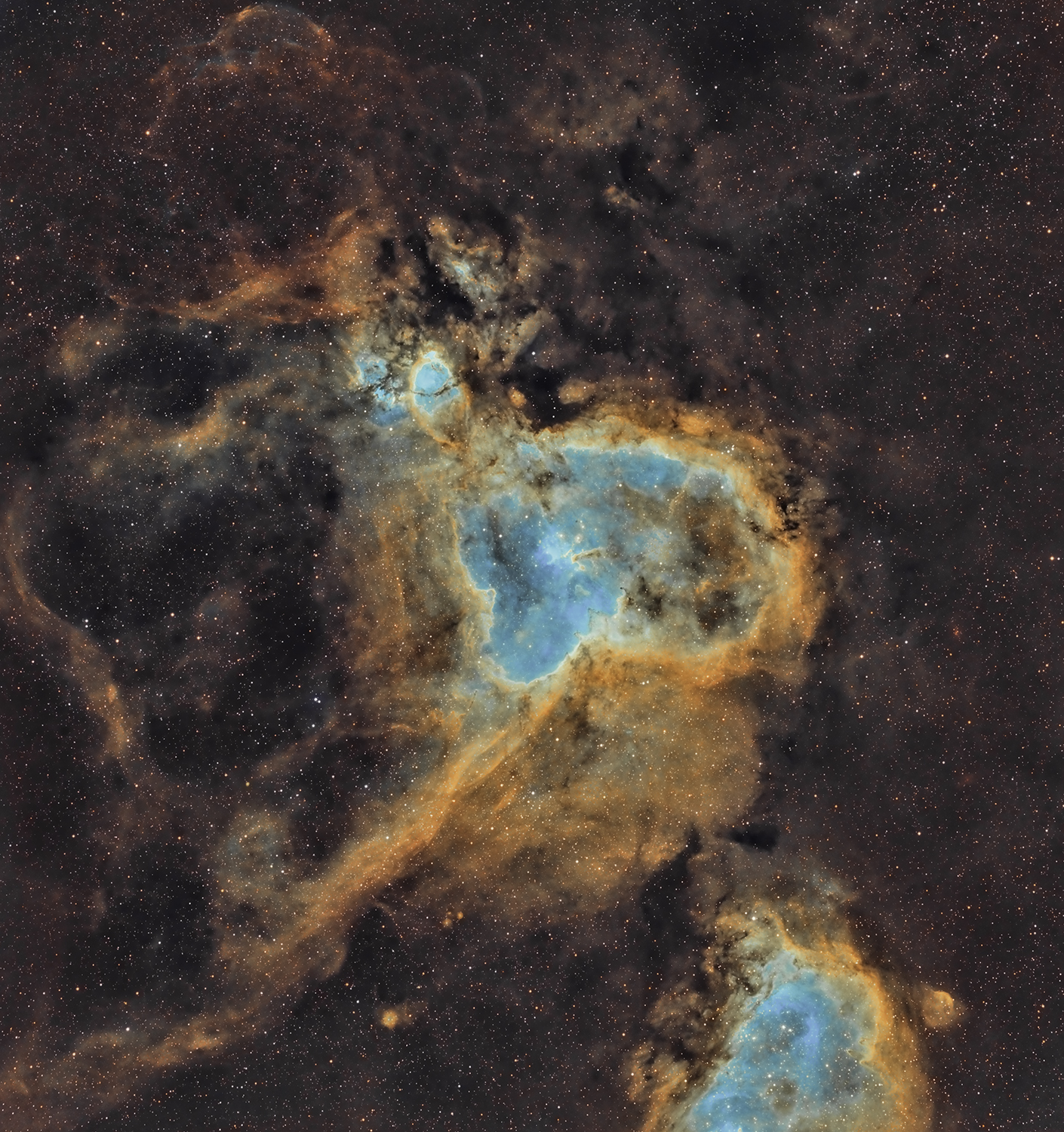Cosmos Cassiopeia
Cassiopeia is a constellation in the northern sky named after the vain queen Cassiopeia, mother of Andromeda, in Greek mythology, who boasted about her unrivaled beauty. Cassiopeia was one of the 48 constellations listed by the 2nd-century Greek astronomer Ptolemy, and it remains one of the 88 modern constellations today. It is easily recognizable due to its distinctive ‘W‘ shape, formed by five bright stars.
Cassiopeia is located in the northern sky and from latitudes above 34°N it is visible year-round. In the (sub)tropics it can be seen at its clearest from September to early November, and at low southern, tropical, latitudes of less than 25°S it can be seen, seasonally, low in the North.
At magnitude 2.2, Alpha Cassiopeiae, or Schedar, is generally the brightest star in Cassiopeia, though it is occasionally outshone by the variable Gamma Cassiopeiae, which has reached magnitude 1.6. The constellation hosts some of the most luminous stars known, including the yellow hypergiants Rho Cassiopeiae and V509 Cassiopeiae and white hypergiant 6 Cassiopeiae. In 1572, Tycho Brahe’s supernovaflared brightly in Cassiopeia. Cassiopeia A is a supernova remnant and the brightest extrasolar radio source in the sky at frequencies above 1 GHz. Fourteen star systems have been found to have exoplanets, one of which—HR 8832—is thought to host seven planets.
